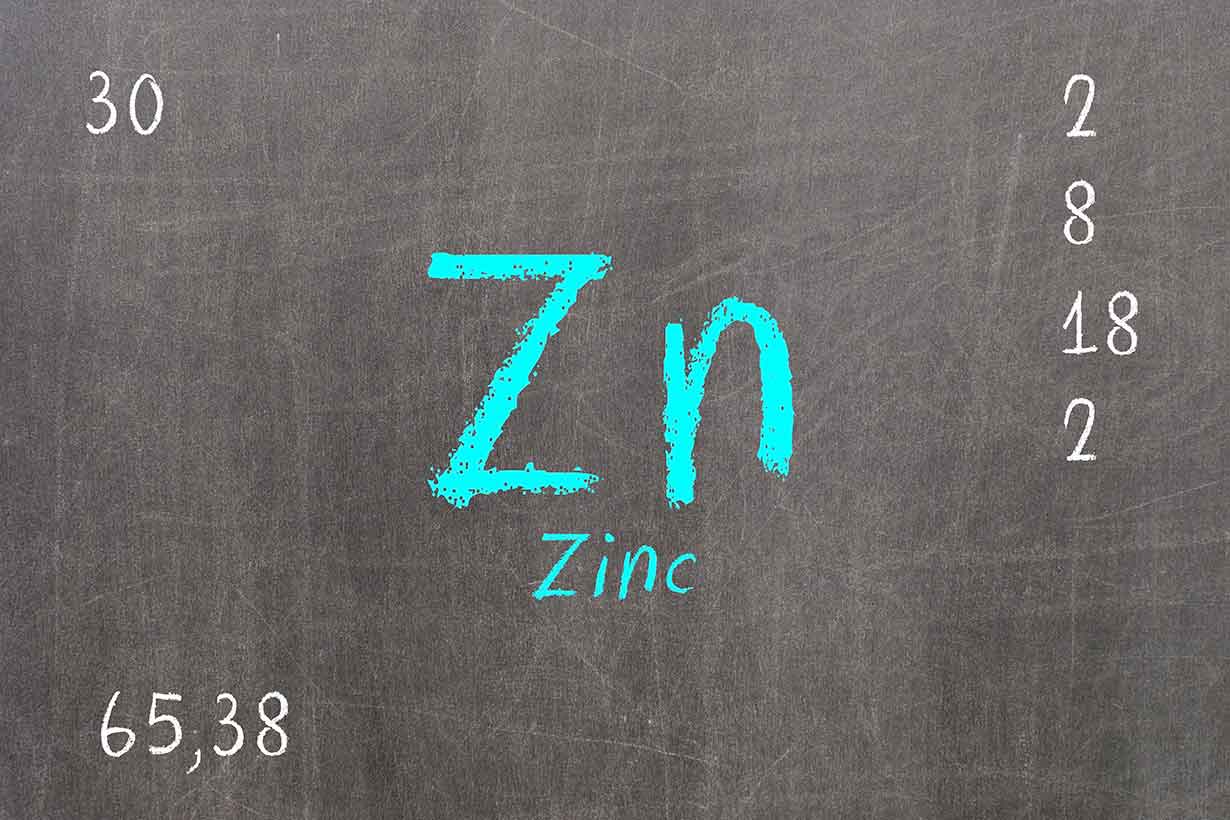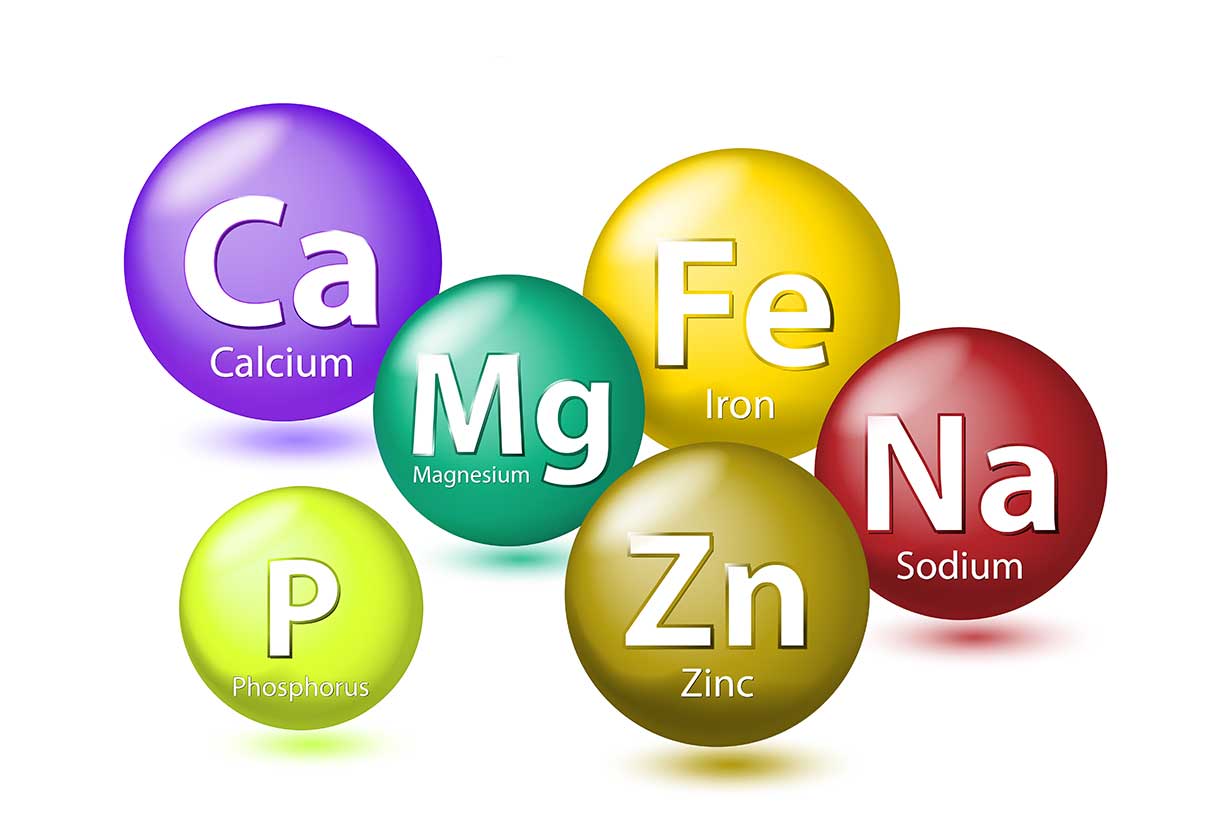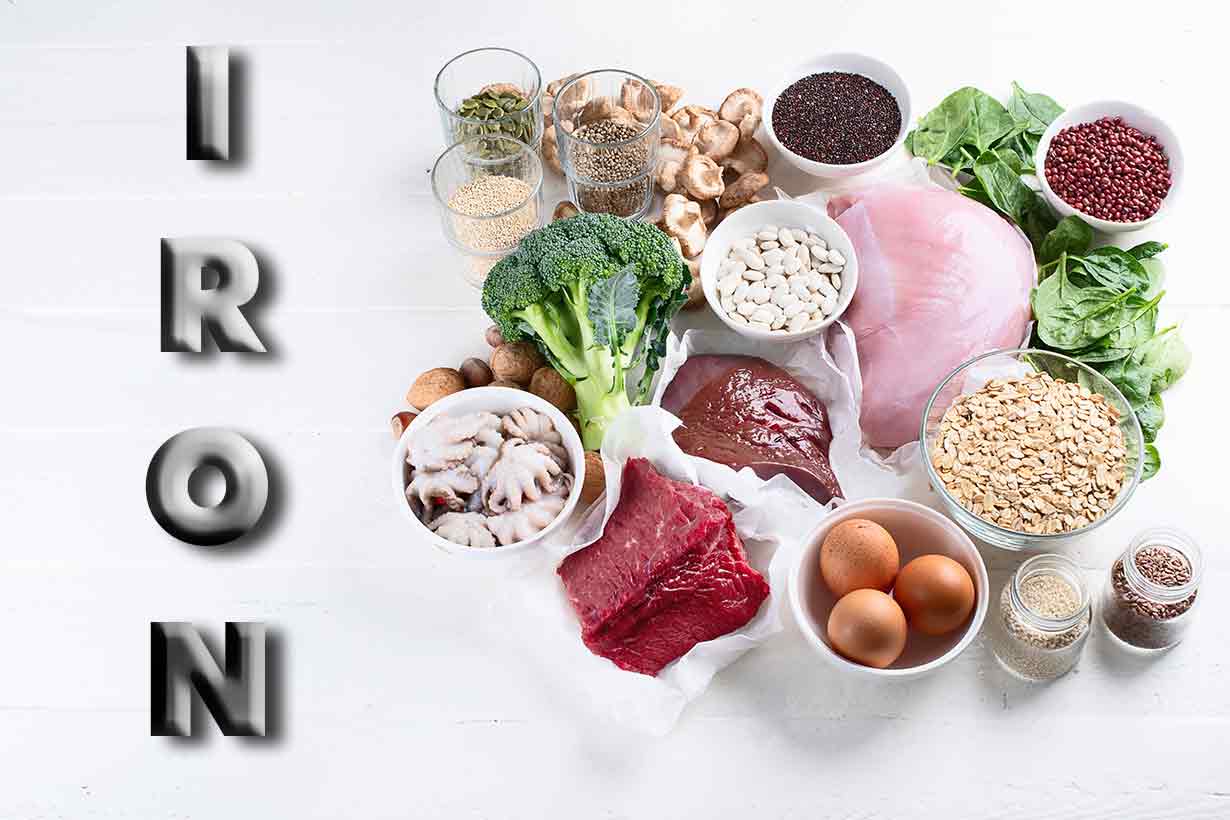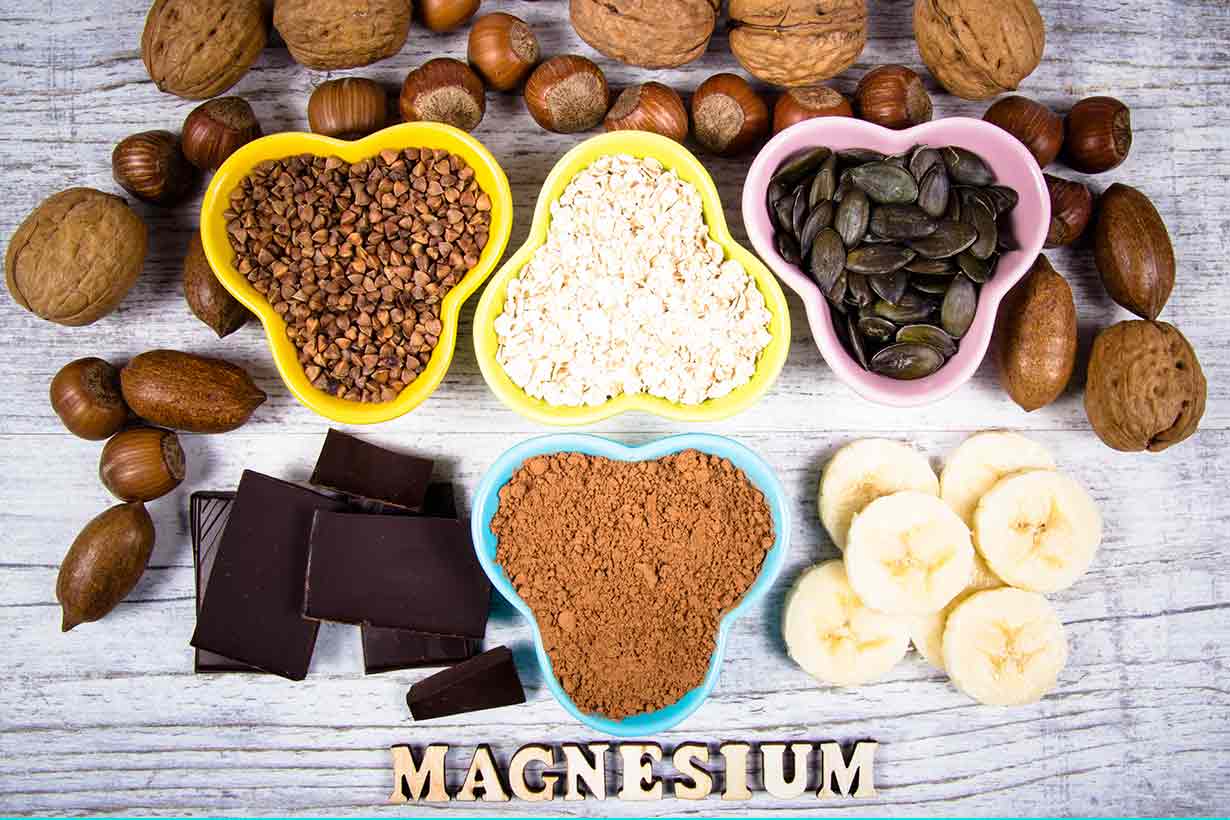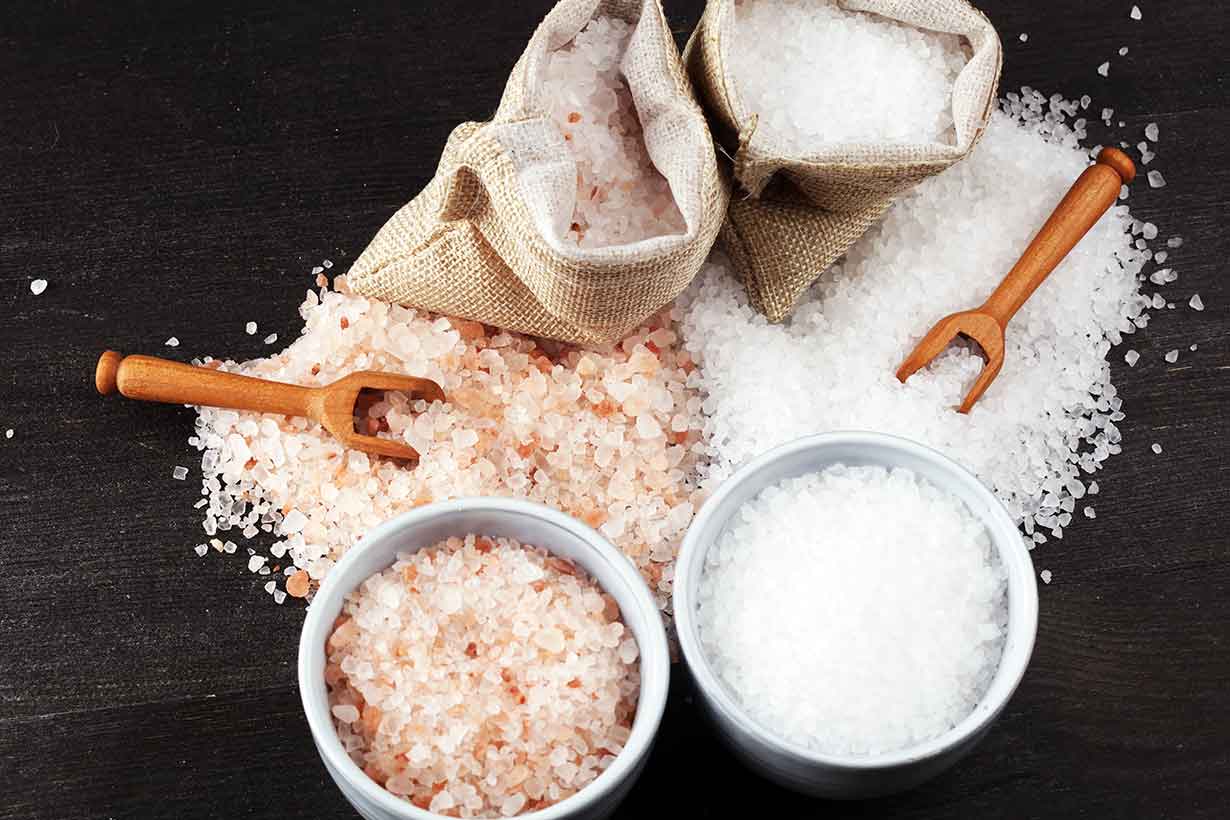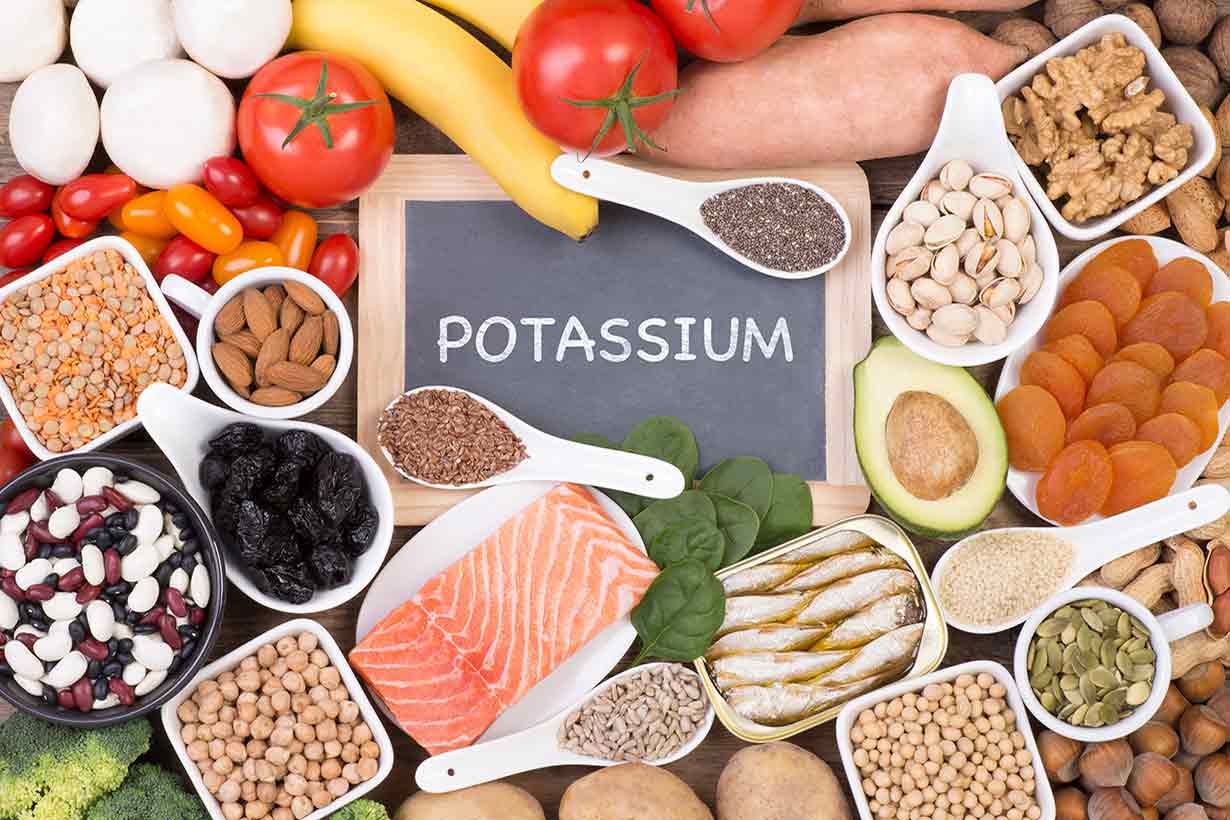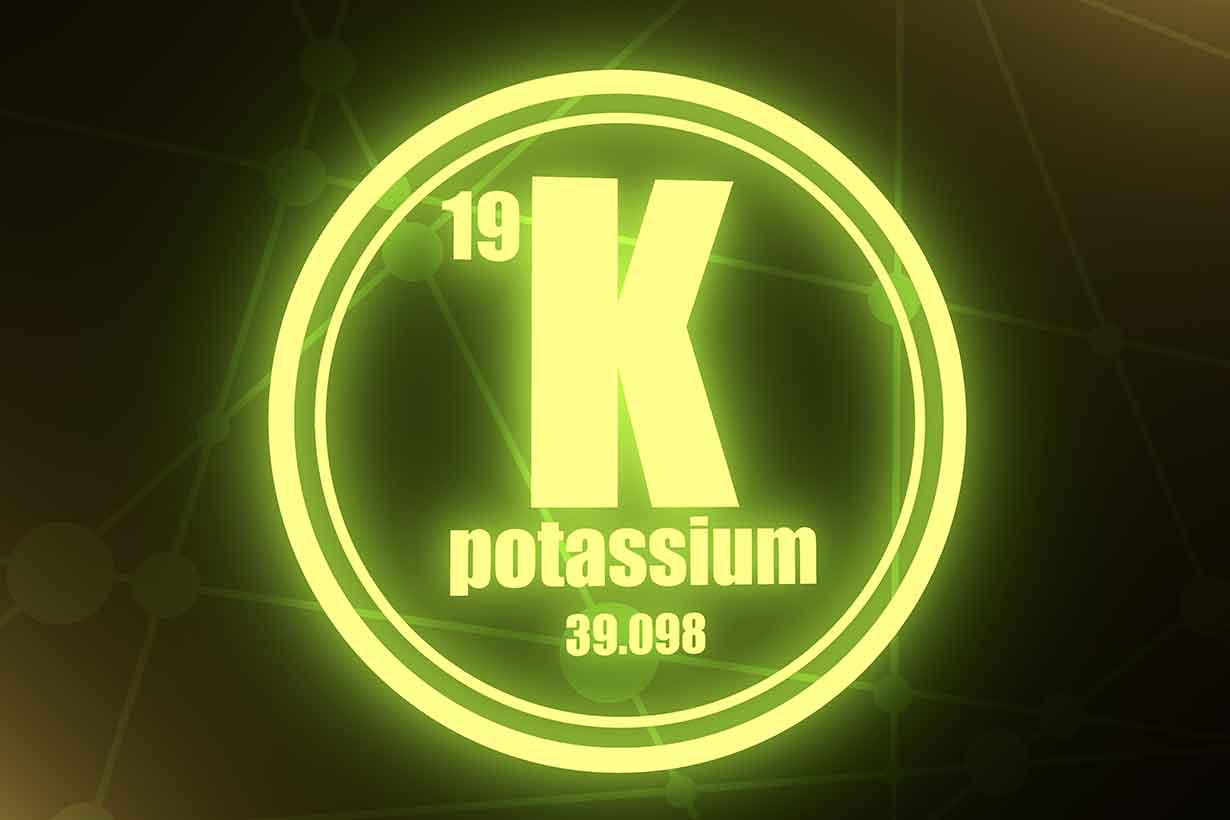Zinc is an essential mineral with several important functions in the body.
However, where can we find the best dietary sources of the mineral?
This article presents thirty foods high in zinc from diverse food groups.
Why is Zinc Important?
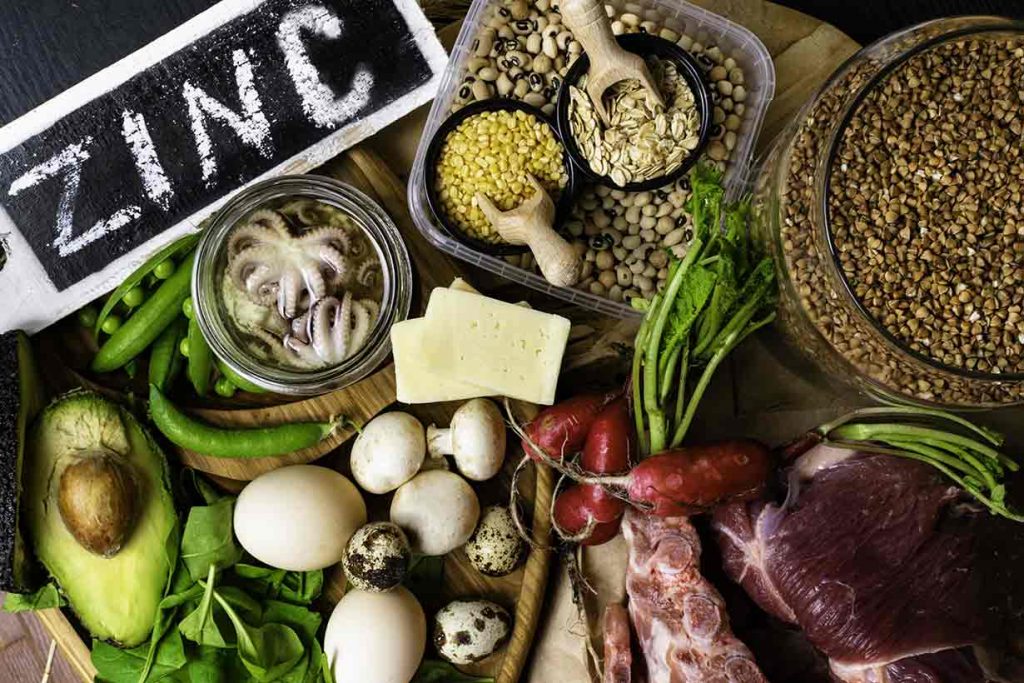
Zinc is a micronutrient that we need to obtain from the food we eat. Thus, it is classed as an ‘essential mineral.’
Among its functions, zinc plays a vital role in the immune system, DNA production, growth, and wound healing (1).
See here for more on the importance of zinc: zinc functions and benefits
Zinc deficiency is relatively prevalent globally, particularly in developing countries. Based on data from 2012, it is estimated that approximately 17% of people globally have zinc deficiency (2).
High levels of zinc are present in foods such as meat, fish, shellfish, legumes, and whole grains.
How Much Zinc Do We Need?
Recommended Dietary Allowance (RDA)
The Food and Nutrition Board at the National Academies of Sciences, Engineering, and Medicine has set a recommended dietary allowance (RDA) for zinc. These RDA values vary depending on age and sex and are as follows (3):
| Age Group and Life Stage | Male | Female |
|---|---|---|
| <6 months old (Adequate Intake*) | 2 mg | 2 mg |
| 7-12 months | 3 mg | 3 mg |
| 1-3 years | 3 mg | 3 mg |
| 4-8 years | 5 mg | 5 mg |
| 9-13 years | 8 mg | 8 mg |
| 14-18 years | 11 mg | 9 mg |
| >19 years old | 11 mg | 8 mg |
| During pregnancy (age <18 years) | 12 mg | |
| During pregnancy (age >19 years) | 11 mg | |
| Lactation (<18 years) | 13 mg | |
| Lactation (>19 years) | 12 mg |
*An adequate Intake (AI) is set when there is insufficient data to make an evidence-based RDA recommendation. However, the AI is assumed to provide an adequate amount of zinc.
Daily Values (% DV)
The US Food and Drug Administration (FDA) has also set a simple reference value for the amount of zinc that we should consume. This is known as a ‘daily value’ (% DV), and it is based upon a typical 2000-calorie diet.
The daily value for zinc is 11 mg (4).
Foods High In Zinc
The following list of zinc-rich foods shows how much of the mineral each food offers per 100 grams and per typical serving.
For each food, you can find the amount of zinc it contains per typical serving and per 100 grams.
The source of all nutritional data is the USDA FoodData Central database.
Listed daily values have been calculated using USDA data alongside the FDA’s published daily values.
1) Adzuki beans, cooked
| Zinc per 100 grams | Zinc per 230-gram cup |
|---|---|
| 1.77 mg (16% DV) | 4.07 mg (37% DV) |
A 230-gram cup serving of cooked adzuki beans provides 37% of the daily value for zinc (4).
2) Avocado, raw
| Zinc per 100 grams | Zinc per 201-gram avocado |
|---|---|
| 0.64 mg (6% DV) | 1.29 mg (12% DV) |
A typical avocado contains approximately 12% of the daily value for zinc (5).
Avocados are also an excellent source of minerals such as potassium and copper.
3) Beef, ground, 97% lean, cooked
| Zinc per 100 grams | Zinc per 3-oz (85g) serving |
|---|---|
| 6.94 mg (63% DV) | 5.9 mg (54% DV) |
Meat is one of the best dietary zinc sources. However, lean sources provide the highest amounts due to the lower fat (thus higher mineral) content.
A 3-ounce (85-gram) serving of cooked 97% lean beef offers 54% of zinc’s daily value (6).
Lean beef is also an excellent source of iron.
4) Beef, steak, ribeye, cooked
| Zinc per 100 grams | Zinc per 240g steak |
|---|---|
| 6.62 mg (60% DV) | 15.9 mg (145% DV) |
A typical 240-gram ribeye steak provides 145% of the daily value for zinc (7).
5) Crab, Alaska King, cooked
| Zinc per 100 grams | Zinc per 134g leg |
|---|---|
| 7.62 mg (69% DV) | 10.2 mg (93% DV) |
Like most meat and seafood, shellfish also provides high levels of zinc, and crab is one of the best sources. A 134-gram leg offers 93% of the daily value (8).
6) Eel, cooked
| Zinc per 100 grams | Zinc per 159g fillet |
|---|---|
| 2.08 mg (19% DV) | 3.31 mg (30% DV) |
Eel provides a rich source of zinc with approximately 30% of the daily value in a 159-gram fillet (9).
7) Green peas, cooked
| Zinc per 100 grams | Zinc per 160g cup |
|---|---|
| 1.19 mg (11% DV) | 1.9 mg (17% DV) |
A typical 160-gram cup of green peas offers 17% of the daily value for zinc (10).
8) Hemp seeds
| Zinc per 100 grams | Zinc per 3 tbsp (30g) |
|---|---|
| 9.9 mg (90% DV) | 2.97 mg (27% DV) |
Hemp seeds offer more zinc than most other nuts and seeds; a 3-tablespoon serving provides 27% of the daily value (11).
9) Kamut, cooked
| Zinc per 100 grams | Zinc per 127g cup |
|---|---|
| 1.84 mg (17% DV) | 3.16 mg (29% DV) |
Kamut is a zinc-rich whole grain; a cup serving of cooked kamut contains 29% of the daily value (12).
10) Lentils, cooked
| Zinc per 100 grams | Zinc per 198g cup |
|---|---|
| 1.27 mg (12% DV) | 2.52 mg (23% DV) |
A 198-gram cup of cooked lentils offers 23% of the daily value for zinc (13).
11) Lima beans, cooked
| Zinc per 100 grams | Zinc per 188g cup |
|---|---|
| 0.95 mg (9% DV) | 1.79 mg (16% DV) |
Lima beans are another legume with moderately high zinc content. A 188-gram cup of cooked lima beans provides 16% of the daily value (14).
12) Liver, lamb, cooked
| Zinc per 100 grams | Zinc per 3oz (85g) serving |
|---|---|
| 7.89 mg (72% DV) | 6.71 mg (61% DV) |
Liver contains significant amounts of zinc, and lamb’s liver offers the highest amount. A 3-ounce (85-gram) serving offers 61% of the daily value (15).
13) Lobster, cooked
| Zinc per 100 grams | Zinc per 3oz (85g) serving |
|---|---|
| 4.05 mg (37% DV) | 3.44 mg (31% DV) |
Lobster supplies 31% of the daily value for zinc per 3-ounce (85-gram) serving (16).
14) Mussels, cooked
| Zinc per 100 grams | Zinc per 3oz (85g) serving |
|---|---|
| 2.67 mg (24% DV) | 2.27 mg (21% DV) |
A three-ounce (85-gram) serving of cooked mussels supplies 21% of zinc’s daily value (17).
15) Oats, raw weight
| Zinc per 100 grams | Zinc per 1/2 cup (78g) serving |
|---|---|
| 3.97 mg (36% DV) | 3.10 mg (28% DV) |
Based on their raw weight, a half-cup (78-gram) serving of oats provides 28% of the daily value for zinc (18).
16) Octopus, cooked
| Zinc per 100 grams | Zinc per 3oz (85g) serving |
|---|---|
| 3.36 mg (31% DV) | 2.86 mg (26% DV) |
A three-ounce serving of cooked octopus contains around 26% of the daily value for zinc (19).
17) Oysters, canned
| Zinc per 100 grams | Zinc per 3oz (85g) serving |
|---|---|
| 91 mg (827% DV) | 77.4 mg (704% DV) |
Oysters probably have the highest zinc content out of all foods. A three-ounce (85-gram) serving of canned oysters has 704% of the mineral’s daily value (20).
18) Oysters, Eastern, cooked
| Zinc per 100 grams | Zinc per 6 medium oysters (59g) |
|---|---|
| 45.2 mg (411% DV) | 26.7 mg (243% DV) |
Like canned oysters, fresh oysters are also rich sources of zinc. A three-ounce (85-gram) portion contains 243% of the daily value (21).
19) Parmesan cheese, grated
| Zinc per 100 grams | Zinc per oz (28.35g) serving |
|---|---|
| 4.2 mg (38% DV) | 1.19 mg (11% DV) |
Adding an ounce (28.35 grams) of grated Parmesan to food provides equal to 11% of the daily value for zinc (22).
A simple way to get some extra zinc into a meal.
20) Pork chop, lean only, cooked
| Zinc per 100 grams | Zinc per 206g chop |
|---|---|
| 3.28 mg (30% DV) | 6.76 mg (61% DV) |
A typical lean pork chop weighing 206 grams offers 61% of zinc’s daily value (23).
21) Pork, ground, 96% lean, cooked
| Zinc per 100 grams | Zinc per 3 oz (85g) serving |
|---|---|
| 2.56 mg (23% DV) | 2.18 mg (20% DV) |
A three-ounce (85-gram) serving of 96% lean, ground pork offers 20% of the daily value for zinc (24).
22) Shiitake mushrooms, cooked
| Zinc per 100 grams | Zinc per 145g cup |
|---|---|
| 1.33 mg (12% DV) | 1.93 mg (18% DV) |
Shiitake mushrooms provide a good source of zinc; a 145-gram cup of cooked mushrooms provides 18% of the daily value (25).
23) Skim milk
| Zinc per 100 grams | Zinc per 245g cup |
|---|---|
| 0.41 mg (4% DV) | 1 mg (9% DV) |
Skim milk provides moderate levels of zinc; a 245-gram cup serving offers 9% of the daily value (26).
24) Soybean sprouts, cooked
| Zinc per 100 grams | Zinc per 70g cup |
|---|---|
| 2.1 mg (19% DV) | 1.47 mg (13% DV) |
A 70-gram cup of sprouted soybeans provides 13% of zinc’s daily value (27).
25) Spinach, cooked
| Zinc per 100 grams | Zinc per 180g cup |
|---|---|
| 0.76 mg (7% DV) | 1.37 mg (12% DV) |
Spinach is the best vegetable source of zinc; a 180-gram cup of cooked spinach provides 12% of the daily value (28).
26) Spiny lobster, cooked
| Zinc per 100 grams | Zinc per 163g lobster |
|---|---|
| 7.27 mg (66% DV) | 11.8 mg (107% DV) |
Spiny lobster provides a rich source of zinc; a typical 163-gram lobster offers 107% of the mineral’s daily value (29).
27) Teff, cooked
| Zinc per 100 grams | Zinc per 252g cup |
|---|---|
| 1.11 mg (10% DV) | 2.8 mg (25% DV) |
A 252-gram cup of cooked teff has approximately 25% of the daily value for zinc (30).
28) Tofu, firm
| Zinc per 100 grams | Zinc per half cup (126g) |
|---|---|
| 1.57 mg (14% DV) | 1.98 mg (18% DV) |
Tofu is a good source of zinc, but the firmer varieties, which have a lower water content, contain the most. A half-cup serving of firm tofu provides 18% of zinc’s daily value (31).
29) Wheat germ, toasted
| Zinc per 100 grams | Zinc per oz (28.35g) |
|---|---|
| 16.7 mg (151% DV) | 4.73 mg (43% DV) |
Wheat germ contains significant amounts of zinc; an ounce (28.35g) serving provides 43% of the daily value (32).
30) Whey protein isolate
| Zinc per 100 grams | Zinc per oz (28.35g) |
|---|---|
| 8.72 mg (79% DV) | 2.5 mg (23% DV) |
All whey contains zinc, but whey protein isolate offers the highest levels. A typical ounce (28.35g) scoop provides 23% of the daily value (33).
Which Foods Provide the Most Zinc Per Serving?
The table below provides an at-a-glance comparison of which foods are highest in zinc per typical serving.
| Rank | Food Name | Serving Size | Zinc Content |
|---|---|---|---|
| 1 | Oysters, canned | 3 oz (85g) | 774 mg (704% DV) |
| 2 | Oysters, cooked | 6 medium (59g) | 26.7 mg (243% DV) |
| 3 | Beef, ribeye steak, cooked | 240g steak | 15.9 mg (145% DV) |
| 4 | Spiny lobster, cooked | 163g lobster | 11.8 mg (107% DV) |
| 5 | Crab, Alaska king, cooked | 134g leg | 10.2 mg (93% DV) |
| 6 | Pork chop, lean, cooked | 206g chop | 6.76 mg (61% DV) |
| 7 | Liver, lamb, cooked | 3 oz (85g) | 6.71 mg (61% DV) |
| 8 | Beef, ground, 97% lean, cooked | 3 oz (85g) | 5.9 mg (54% DV) |
| 9 | Wheat germ, toasted | 1 oz (28.35g) | 4.73 mg (43% DV) |
| 10 | Adzuki beans, cooked | 230g cup | 4.07 mg (37% DV) |
| 11 | Lobster, cooked | 3 oz (85g) | 3.44 mg (31% DV) |
| 12 | Eel, cooked | 159g fillet | 3.31 mg (30% DV |
| 13 | Kamut, cooked | 127g cup | 3.16 mg (29% DV) |
| 14 | Oats, raw weight | 1/2 cup (78g) | 3.10 mg (28% DV) |
| 15 | Hemp seeds | 3-tbsp (30g) | 2.97 mg (27% DV) |
| 16 | Octopus, cooked | 3 oz (85g) | 2.86 mg (26% DV) |
| 17 | Teff, cooked | 252g cup | 2.8 mg (25% DV) |
| 18 | Lentils, cooked | 198g cup | 2.52 mg (23% DV) |
| 19 | Whey protein isolate | 1 oz (28.35g) | 2.5 mg (23% DV) |
| 20 | Mussels, cooked | 3 oz (85g) | 2.27 mg (21% DV) |
| 21 | Pork, ground, 96% lean, cooked | 3 oz (85g) | 2.18 mg (20% DV) |
| 22 | Tofu, firm | 1/2 cup (126g) | 1.98 mg (18% DV) |
| 23 | Shiitake mushrooms, cooked | 145g cup | 1.93 mg (18% DV) |
| 24 | Green peas, cooked | 160g cup | 1.9 mg (17% DV) |
| 25 | Lima beans, cooked | 188g cup | 1.79 mg (16% DV) |
| 26 | Soybean sprouts, cooked | 70g cup | 1.47 mg (13% DV) |
| 27 | Spinach, cooked | 180g cup | 1.37 mg (12% DV) |
| 28 | Avocado, raw | 201g avocado | 1.29 mg (12% DV) |
| 29 | Parmesan cheese, grated | 1 oz (28.35g) | 1.19 mg (11% DV) |
| 30 | Skim milk | 245g cup | 1.0 mg (10% DV) |
Commonly Asked Questions
For additional information, here are some answers to commonly asked questions about zinc.
Oysters contain higher amounts of zinc than any other food. However, all fish, meat, and shellfish generally have high levels of the mineral.
Avocados offer a good level of zinc. Most fruits contain this mineral but tend to be relatively low in it. Avocados offer the most among fruit.
Final Thoughts
As this article shows, a wide range of different foods is high in zinc.
Oysters are the best dietary source of this mineral, but meat, seafood, whole grains, and legumes generally offer good amounts.

